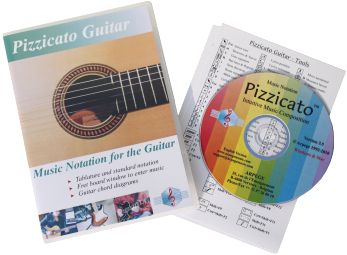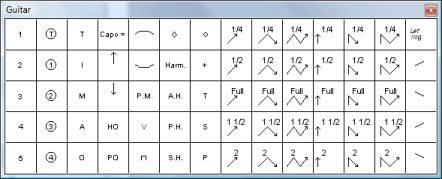
The opposite applies when going back to arco from pizz. In order to make a quick change, the bow needs to end on an up stroke so the hand is close to the string it needs to pluck. When going from arco to pizz and back, one must consider the physics of the action. This makes it more comfortable as the bow is not flailing around in the air and the other fingers can relax. If time permits, you will often see the players put the bow down while they perform long pizzicato passages. So while a faster passage may be possible, it will sound a little softer and the timing may not be as together as it would be had the same passage been played arco.
#PIZZICATO NOTATION FULL#
In order to make a good full sound players need time to get the finger back into into position. Players use one finger to play pizzicato the rest are holding the bow. The tone gets progressively thinner.īesides allowing composers to get used to louder-than-possible pizzicato, samples have also led to composers writing music with pizzicato passages that are too fast. You can go higher, but due to the very short length and tension of the string it gets harder to produce a quality sound.

This C is the highest decent sounding pizz note on the violin. This is really obvious on the violin where you are dealing with a very short, thin, high-tension string. When getting into the higher register, pizzicato gets very thin sounding. It is also worth noting that the change in tone is consistent from violin through viola through to the cello however, the switch to bass is a big change and care needs to be taken when trying to continue lines from the cello to the bass. The violin produces only a little sustain in the low register and none from the middle up. The bass has the most presence and produces a thick tone with quite a bit of sustain. The general rule is that the longer and thicker the string is, the louder and fuller the sound will be. I also think some of the libraries have been compressed, as there is a lot more sustain to their sound than there is in real life.Įach instrument in the string family has a different sound when it comes to playing pizz, and depending on the tessitura and string involved can achieve a different range of sounds as well.

The sound of a real section playing pizzicato often has a looseness in the timing, not at all like the ‘perfect take’ samples. Many a person has done a mockup with forte pizz balanced against arco strings and brass, and when we get to the studio they wonder why it sounds so different. The loudest pizzicato is really only equivalent to a mezzo forte with the bow. Pizzicato is the technique where the player plucks the string with their finger. They are In touch with, Tremolo, and Pizzicato.

There are three techniques where real world sounds and possibilities are easily misrepresented in the sampled world.


 0 kommentar(er)
0 kommentar(er)
